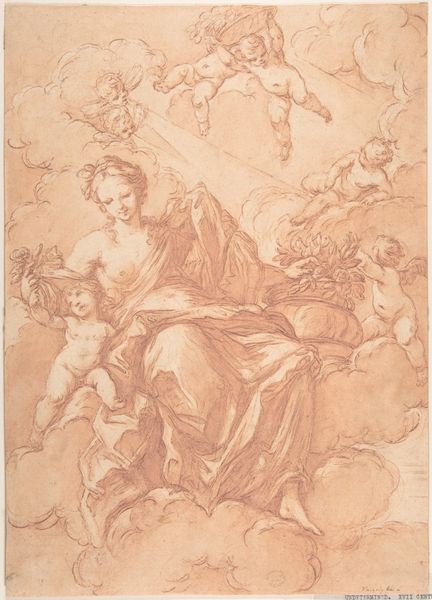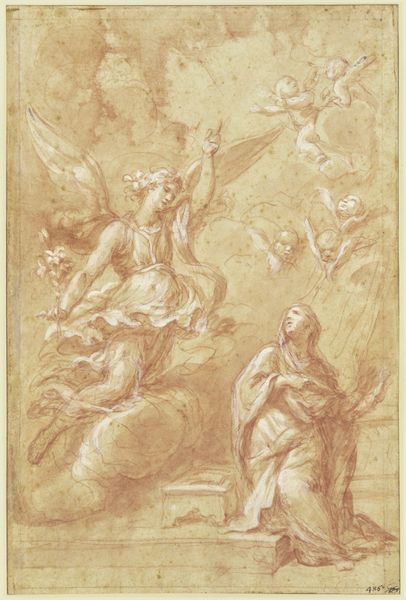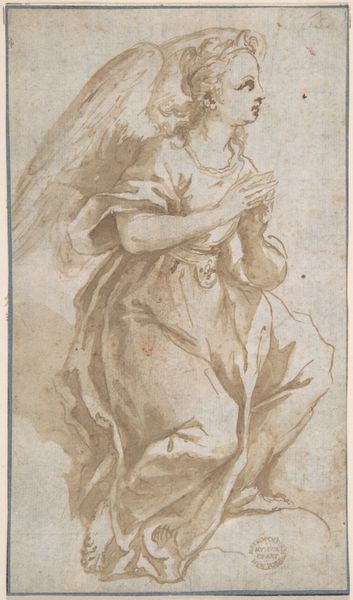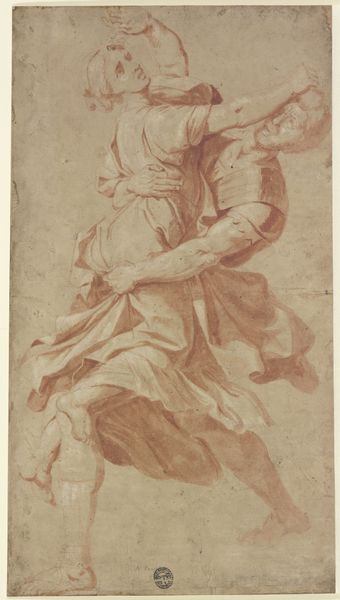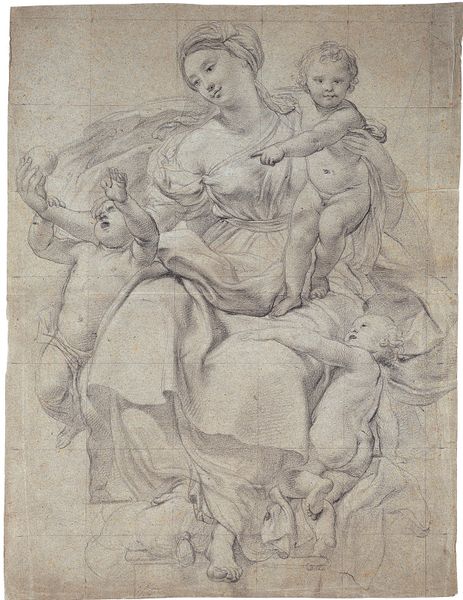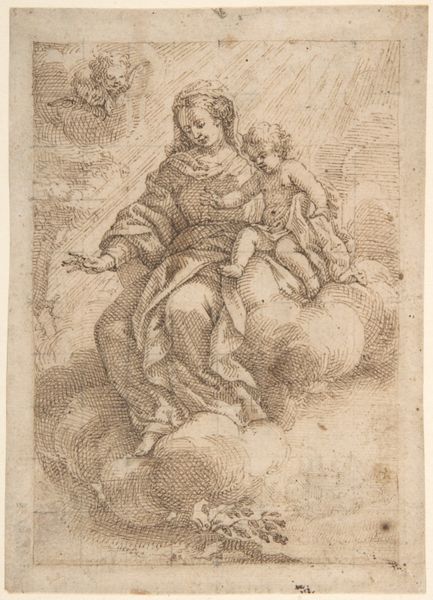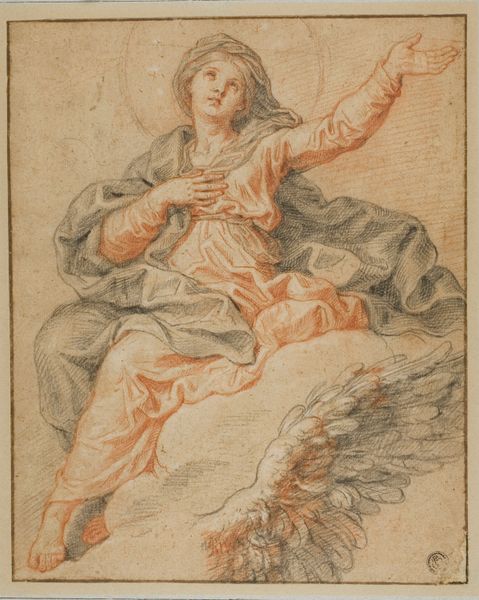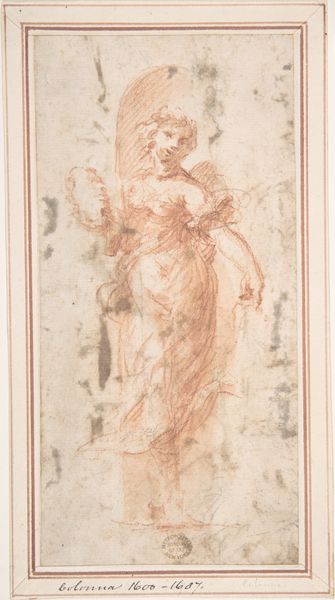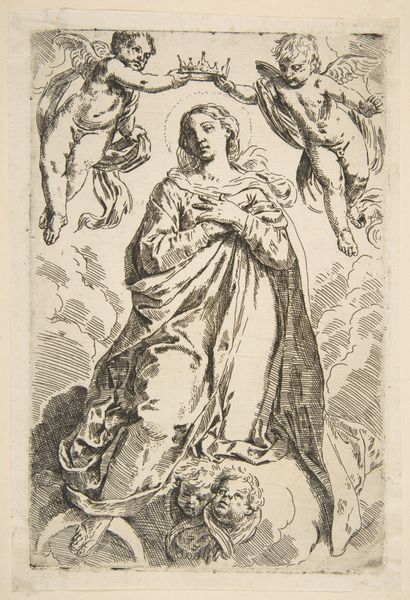
drawing, paper, chalk
#
drawing
#
figuration
#
paper
#
form
#
chalk
#
history-painting
#
italian-renaissance
#
virgin-mary
#
angel
Dimensions: 10-1/2 x 8 in. (26.7 x 20.3 cm)
Copyright: Public Domain
Curator: This intriguing piece is titled "Coronation of the Virgin," an anonymous work dated sometime between 1600 and 1700, currently housed at the Metropolitan Museum of Art. It is executed with chalk on paper. Editor: The immediate impression is one of upward movement, a lightness emphasized by the cloud-like forms and the ethereal figures. It has a spiritual weightlessness, would you agree? Curator: Indeed. Note how the artist has utilized red chalk to create dynamic contours, particularly in the drapery enveloping the Virgin. It is a marvel how a single color achieves such textural variety. We see these choices recurring throughout the Italian Renaissance. Editor: It speaks to a time when the Church and its doctrines wielded immense influence. Images like this weren't just art, they were propaganda, designed to inspire piety and maintain the social order. The glorification of the Virgin Mary served to elevate the role of women, at least within the religious sphere. Curator: Observe the gestures of the angels poised to crown the Virgin. Their forms, though rendered with quick, assured lines, contribute to a balanced triangular composition. This ordered arrangement guides the eye towards the central figure. Editor: But let's consider who might have commissioned a drawing like this. Was it for a private devotional purpose, or as a study for a larger altarpiece destined for a public space? The answer impacts our understanding of its purpose and the artist's intended audience. Curator: Good point. The material is certainly suited to sketches for grander works; it allows great creative liberties. There’s a sense of planning in the construction, visible in the layering and hatching. Editor: The art served as visual catechism and reinforces her central role as mediator, emphasizing devotion through accessible and appealing visual storytelling. Curator: Focusing on the artist's formal strategies gives clues about the aesthetics of this piece. It successfully elevates form alongside function. Editor: Considering both the artistic strategies and the social background helps in viewing art within an ideological, and, indeed, institutional context. Curator: It helps provide insight, to be sure, illuminating some intriguing considerations in how we evaluate art historically and formally. Editor: Agreed. Thinking of its placement—at the Met—versus a smaller regional museum also changes how its historical narratives are emphasized.
Comments
No comments
Be the first to comment and join the conversation on the ultimate creative platform.
